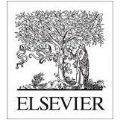In temporal action localization methods, temporal downsampling operations are widely used to extract proposal features, but they often lead to the aliasing problem, due to lacking consideration of sampling rates. This paper aims to verify the existence of aliasing in TAL methods and investigate utilizing low pass filters to solve this problem by inhibiting the high-frequency band. However, the high-frequency band usually contains large amounts of specific information, which is important for model inference. Therefore, it is necessary to make a tradeoff between anti-aliasing and reserving high-frequency information. To acquire optimal performance, this paper learns different cutoff frequencies for different instances dynamically. This design can be plugged into most existing temporal modeling programs requiring only one additional cutoff frequency parameter. Integrating low pass filters to the downsampling operations significantly improves the detection performance and achieves comparable results on THUMOS'14, ActivityNet~1.3, and Charades datasets. Experiments demonstrate that anti-aliasing with low pass filters in TAL is advantageous and efficient.
翻译:在时间行动本地化方法中,时间下游抽样作业被广泛用于提取建议特性,但由于对抽样率的考虑不够,往往会导致别名问题。本文旨在核实TAL方法中的别名存在,并调查使用低传过滤器通过抑制高频带来解决这一问题。然而,高频频带通常包含大量具体信息,这对模型推断很重要。因此,有必要对反传和保留高频信息进行权衡。为了取得最佳性能,本文以动态方式学习不同情况的不同截断频率。这一设计可以插进大多数现有的仅需要额外截断频率参数的时间模型程序。将低传过滤器并入下游作业可大大改进探测性,并在THUMOOS'14、ActionNet~1.3和Charades数据集中取得可比结果。实验表明,在TAL低传过滤器中反传是有利和有效的。



